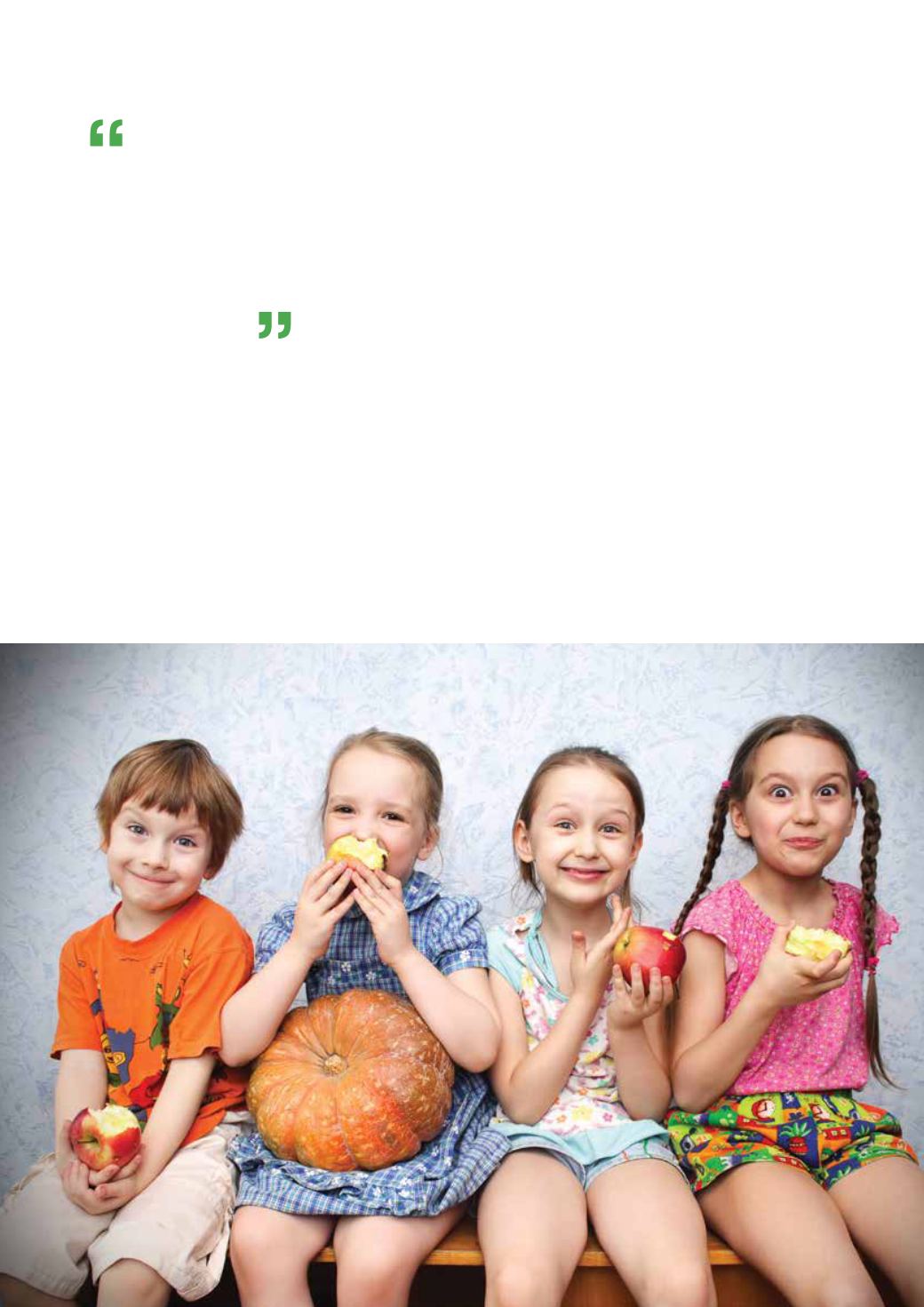
June 2014
73
nutritious meals is to get them involved
in the meal preparation. Kids love to
help out at the supermarket, choosing
the vegetables themselves, bringing
them home and then preparing them
for the dish. Even toddlers can wash
carrots in the sink or help pull mint
leaves off the stem. When a child
knows exactly what’s in the meal that
he or she helped make, and why it’s
good for them, they are more likely to
want to eat it.
Hands-on health
Food education has become a priority
for some pioneering Hong Kong
schools with staff who believe healthy
kids are happy, productive learners.
Cannie Bennett is the founder
of Garden House Pre-school and
Kindergarten in Clearwater Bay. She
has seen the fussiest eaters transform
into healthy ones within months, with
a little hands-on education about good
food.
“When the students are involved
in all aspects of growing, harvesting
and preparing the food, every child
in the class is excited to eat what they
produce,” she says. “Parents are so
surprised to see their children eating
food they wouldn’t normally try.”
The school helps local farmers
maintain a 3,000-square-foot farm,
growing lettuce, turnips, cabbage,
carrots, papaya, mint and eggplant. As
part of their outdoor curriculum, the
students help plant seeds, fertilise and
water their produce. They are then
able to pick the ripe results and bring it
back to the classroom, where everyone
helps prepare the food for snack time.
“Measuring, chopping and mixing
are all good skills to learn for their
development,” says Cannie. “Any
produce left over goes home to parents,
who are always appreciative.”
Time on the farm also allows
for outdoor exercise and a chance to
connect with nature, including the
ever-present butterflies, birds and
insects. The school also chooses books
Measuring,
chopping and
mixing are all
good skills to
learn for their
development.


